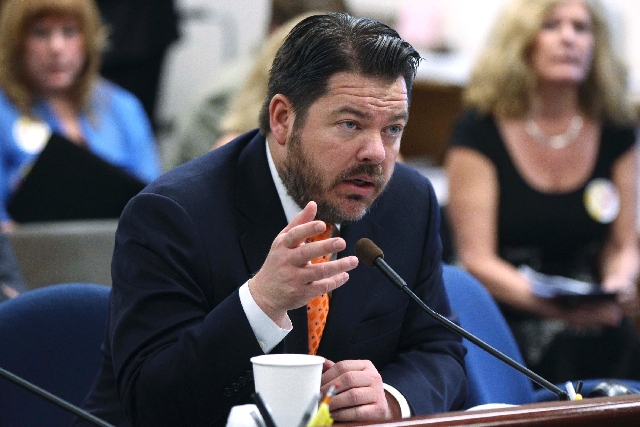Legislation targets Nevada’s construction defect law
CARSON CITY — Construction defect laws intended to protect consumers have morphed into a trial lawyer’s dream and a nightmare for Nevada’s building trades, putting many out of business and sending the cost of insurance skyrocketing, representatives of the homebuilding and construction industry said Friday.
But in testimony before the Senate Judiciary Committee, homeowners recalled their own nightmares of shoddy workmanship, faulty plumbing and poor engineering that were fixed only after lawsuits were filed.
There was little consensus over Senate Bill 161, presented by Senate Minority Leader Michael Roberson, R-Las Vegas. SB161 is one of several bills dealing with construction defect reforms, long a priority for Republicans.
The bill would define a constructional defect as a flaw that “presents an unreasonable risk of injury to a person or property.” It would reduce the time in which lawsuits could be filed and remove attorney’s fees from recoverable damages.
Roberson said the legislation is “critical to putting Nevadans back to work.”
He said the law when adopted in 1995 was “designed as a consumer protection device.”
“Unfortunately, 18 years later the intent of this law is hardly recognizable,” he said.
Roberson and other backers of the bill cited a recent study by the University of Nevada, Las Vegas that said while new home sales plunged 86 percent between 2000 and 2012, construction defect claims rose 355 percent.
Since 2006, the number of claims per new home in Nevada is 38 times the national average, the report said.
“It’s no longer a question of whether this is a crisis,” Roberson said.
Homebuilders complained of predatory behavior by lawyers who solicit homeowners to join lawsuits, even if they have no major problems.
They also argued that the legal process prevents contractors from working with homeowners to fix problems once a construction default lawsuit is filed, leading to expensive, drawn-out litigation.
Josh Hicks, an attorney representing the Coalition for Fairness in Construction, referred to one pending case in which lawyer are seeking $1.5 million in fees.
One builder said his insurance premiums jumped from $37,000 in 1997 to $749,000 five years later.
But there was little sympathy from homeowners who have had to deal with major defects, like broken pipes in the walls.
Tracy Rhodes first noticed a discoloration on the baseboard in 2007.
“Mushrooms were growing from behind my dishwasher,” she said. “My builder no longer existed.”
“By 2010, I was broke, homeless and alone.”
Ralph Walker, a retired trial lawyer, said he and his wife built their “dream house” in Reno for around $500,000. Within three years it was settling. His floors sagged 6 inches. Concrete was cracking. Doors wouldn’t close.
“I didn’t want a lawsuit. I went to the builder,” he said. “I showed him my problem; he said you have a major problem here.”
The builder called the engineer, but Walker said he never heard back from anyone. “That’s why I needed a lawyer involved.”
He said dozens of concrete piers had to be installed under the home to stabilize it.
The cost was $400,000.
The lawsuit judgment included $133,000 to pay his lawyer.
Also, small subcontractors complained of being swept up in litigation for construction problems that don’t involve them.
No action was taken on the bill.






















